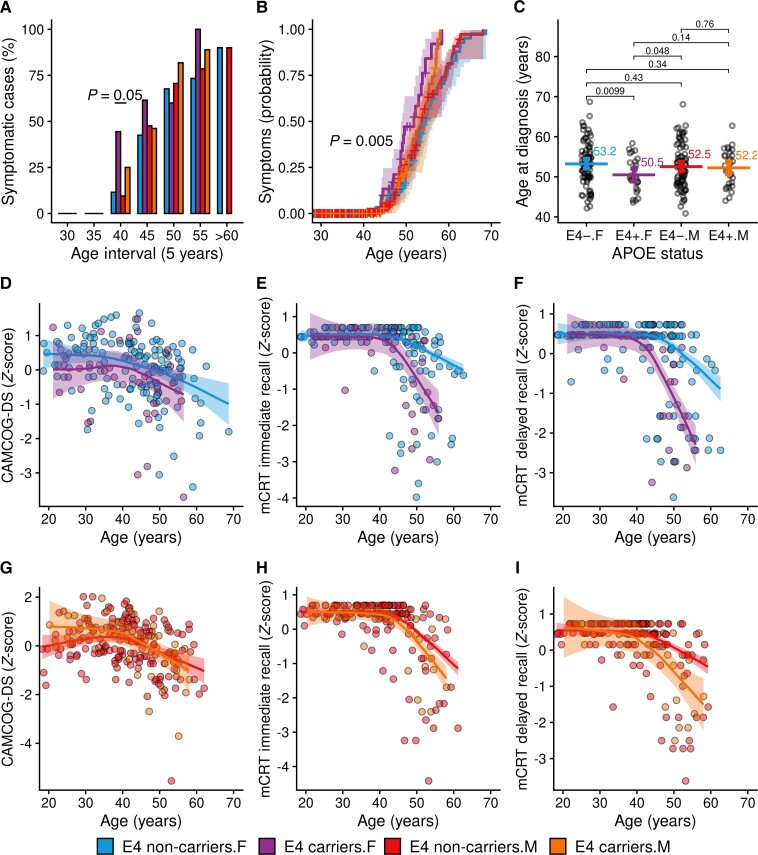Figure 3.
Association of APOE ɛ4 haplotype and biological sex with Alzheimer’s disease prevalence and cognitive decline. (A) Point prevalence of symptomatic Alzheimer’s disease by sex and APOE ɛ4 haplotype across 5-year age intervals. Group differences were assessed with Pearson's chi-squared analysis (for details, see Supplementary Table 4). (B) Survival analysis showing the probability to develop symptomatic Alzheimer’s disease by sex and APOE haplotype across age. The P-value refers to log-rank test analysis. (C) Scatterplots illustrating the distribution of age at diagnosis of Alzheimer’s disease and showing the individual data points, the means and the nonparametric bootstrapped 95% confidence intervals. The P-values refer to t-tests (for details, see Supplementary Table 4). (D–I) Age-related changes in neuropsychological performance at the CAMCOG-DS (D, G), immediate (E, H) and delayed recall (F, I) at the mCRT, with bands representing the 95% confidence intervals in male and female separately. A significant difference between LOESS curves was defined as the age at which the curves diverged visually and the 95% confidence intervals did not overlap (P < 0.05). CAMCOG-DS, Cambridge Cognitive Examination for Older Adults with Down Syndrome; mCRT, modified cued recall test; F, female; M, male; ɛ4, APOE ɛ4 carriers.

